Bring on the boudin, gator bites, gumbo, and étouffée! I’m sharing my edible adventure through Cajun Country, letting you know all of the best that South Louisiana has to offer. This was a long weekend of eating and enjoying the wonderful personalities in beautiful Acadiana with my partners at Louisiana Travel. — Partnership Post
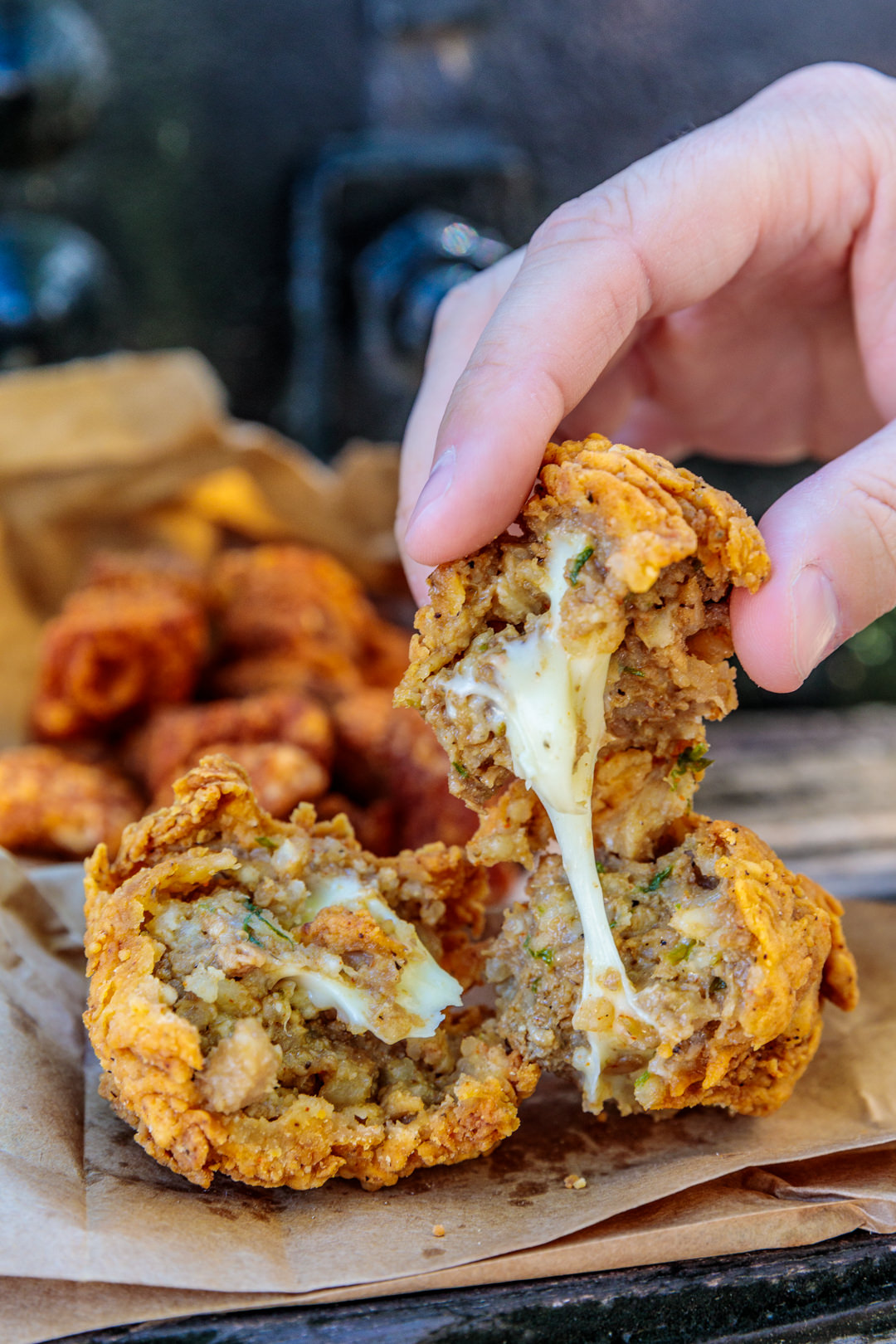
Cajun Country is one of those places that I am shocked that I haven’t crossed off my to-visit list until now. I’ve done the New Orleans thing several times (and absolutely loved it), but always wanted to take a deep dive into the bayous and boudin of South Louisiana. I’m so excited to share this long weekend visit to the culture-rich area that the is Acadiana. Bring your stretchy pants, because the great bites are real, y’all. Get ready to #FeedYourSoul in Louisiana.
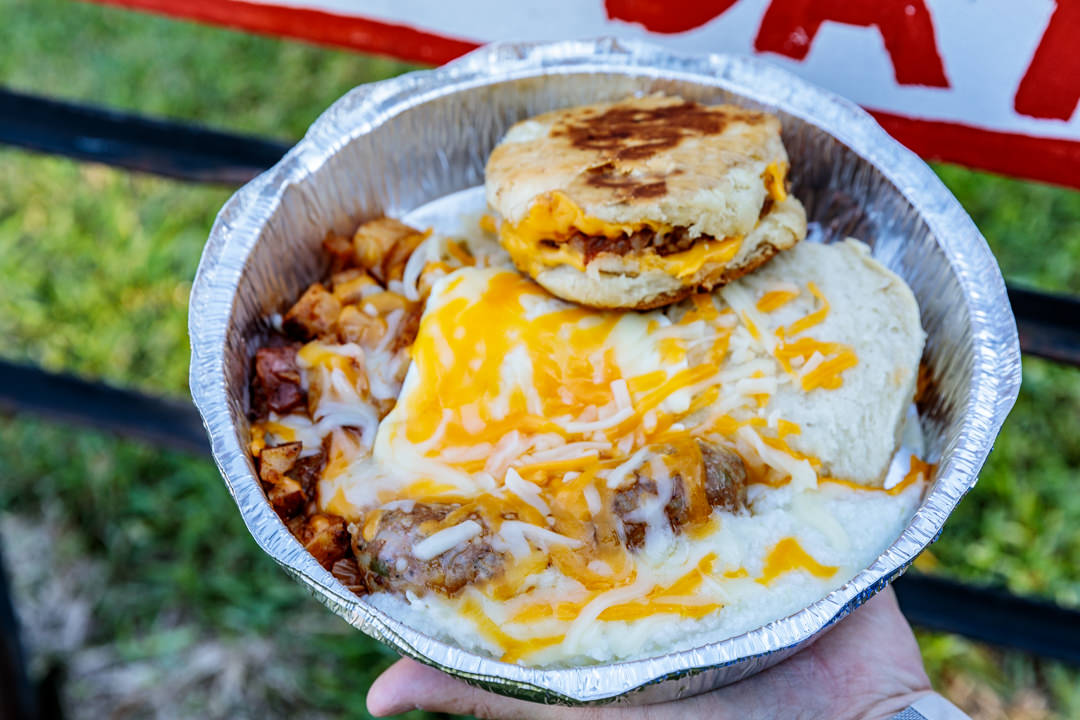
Boudin Bowl + Boudin Breakfast Biscuit | Johnson’s Boucanière, Lafayette, LA
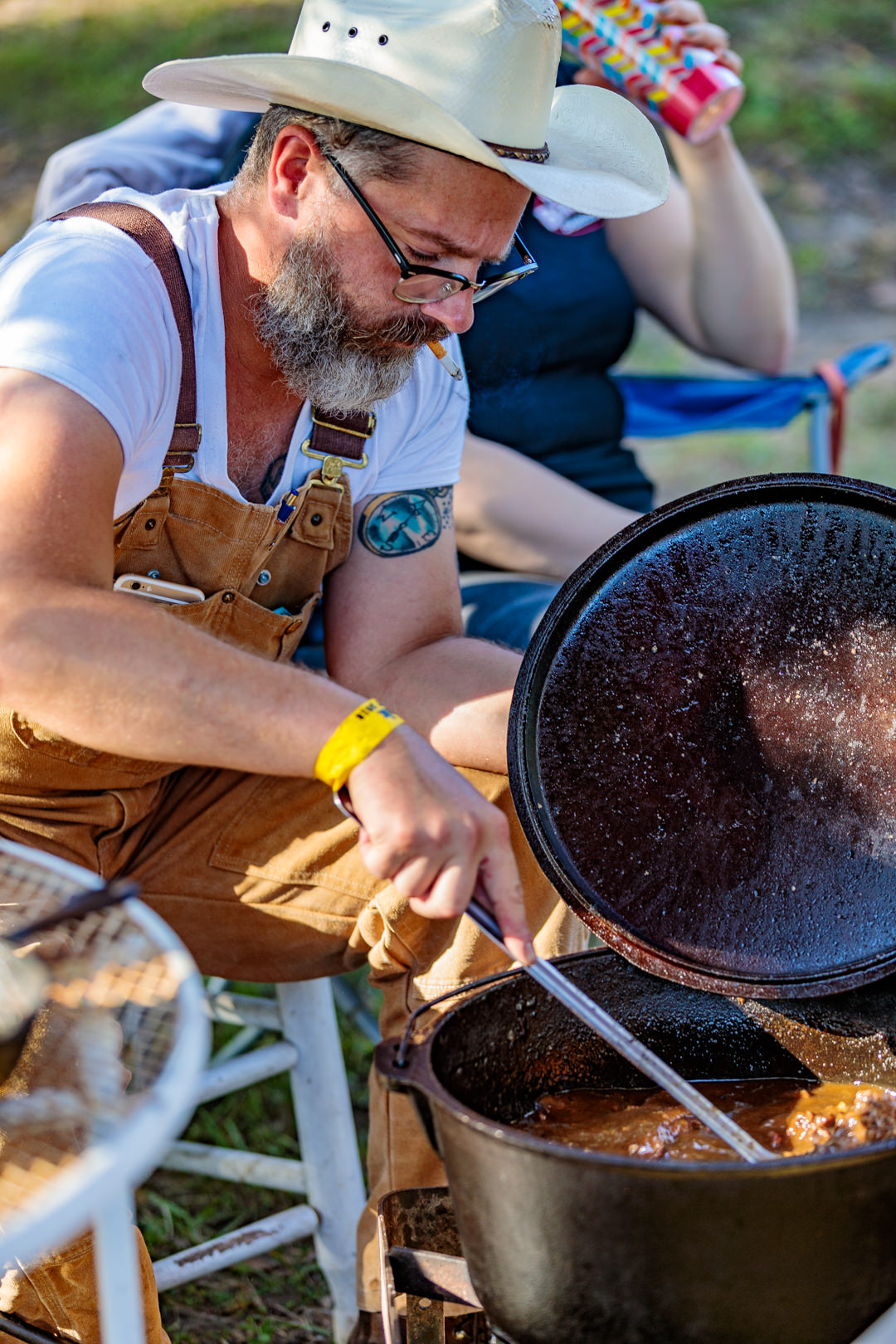
Blackpot Festival & Cookoff | Vermilionville
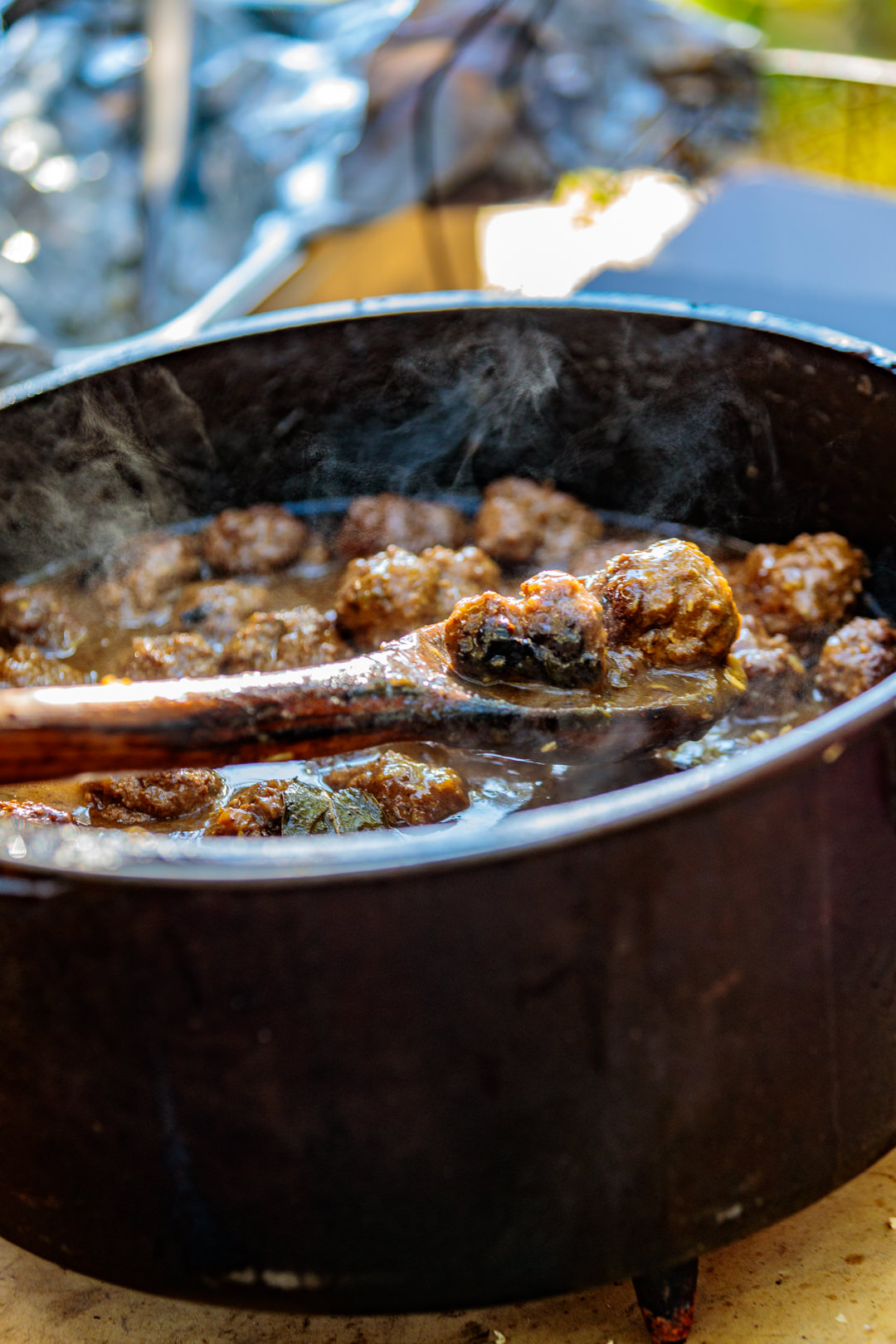
Acadiana and Cajun Country are references to the region of Louisiana that is made up of 64 parishes, or counties, with a strong French influence following the British control of Canada in the 1760s. Many French Canadians moved their homes to this area, bringing their food, language, and family. Together, they continue to influence the region today. It’s pretty amazing to arrive here and see this rich culture so vibrant and alive. Needless to say, the food is where I found my connection while I was visiting the Lafayette area.
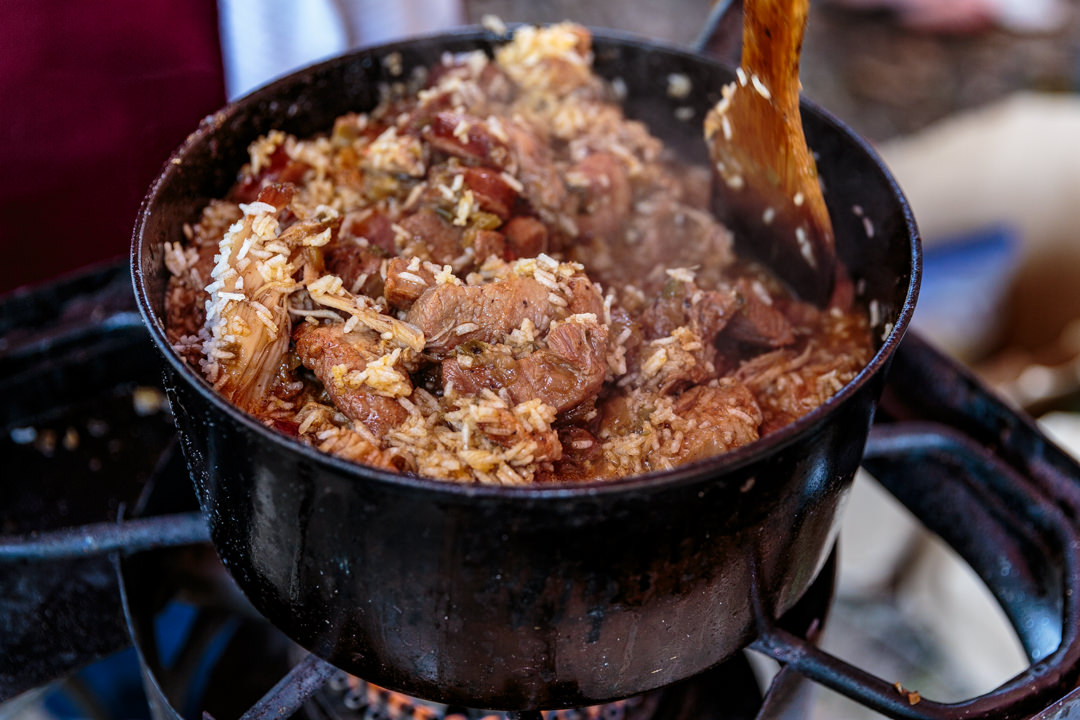
Jambalaya | Vermilionville
The boisterous personalities and core traditions are incredibly alive in the area, and I was determined to experience it for myself. Most of the famous Cajun bites are a product of rural French cuisine that that has been steadily nurtured by generations of families. Because the food is heavily influenced by the area’s geography, the swamps of Southern Louisiana help give rise to some of the most delicious food.
Crawfish, boudin, oysters, gumbo, jambalaya. So many iconic southern comfort staples originated in this area. My goal for this visit was to try as many versions of this authentic fare as possible. I’m happy to report that I put a pretty good dent in the list. For research’s sake, ya know.
- Boudin by Wallace Johnson | Johnson’s Boucanière, Lafayette, LA
- Wallace Johnson showing me his family’s old bread slicer | Johnson’s Boucanière, Lafayette, LA
Boudin
Although it’s seriously tough to choose, I have to say that boudin had to be my favorite bite of the entire trip. I’ve had boudin (pronounced boo-dan) before, but there was something magical about the different ones that I had in Cajun Country.
I figure that about 80 percent of the boudin purchased in Louisiana is consumed before the purchaser has left the parking lot, and most of the rest is polished off in the car. In other words, Cajun boudin not only doesn’t get outside the state; it usually doesn’t even get home. — Calvin Trillin, The New Yorker
Boudin is most definitely what I would call street food. It’s something that you probably have a favorite spot for, know the folks at the boucaniére (type of boucherie; a place where meats are served / smoked) like they are family, and visit on a busy morning for an easy grab and go meal. Very similar to the British blood sausage, typical Cajun Country boudin is actually boudin rouge, a sausage made with pork cuts, rice, and plenty of seasoning. Masters of boudin have been making these links for ages, perfecting their own specific flavor and recipe over time.
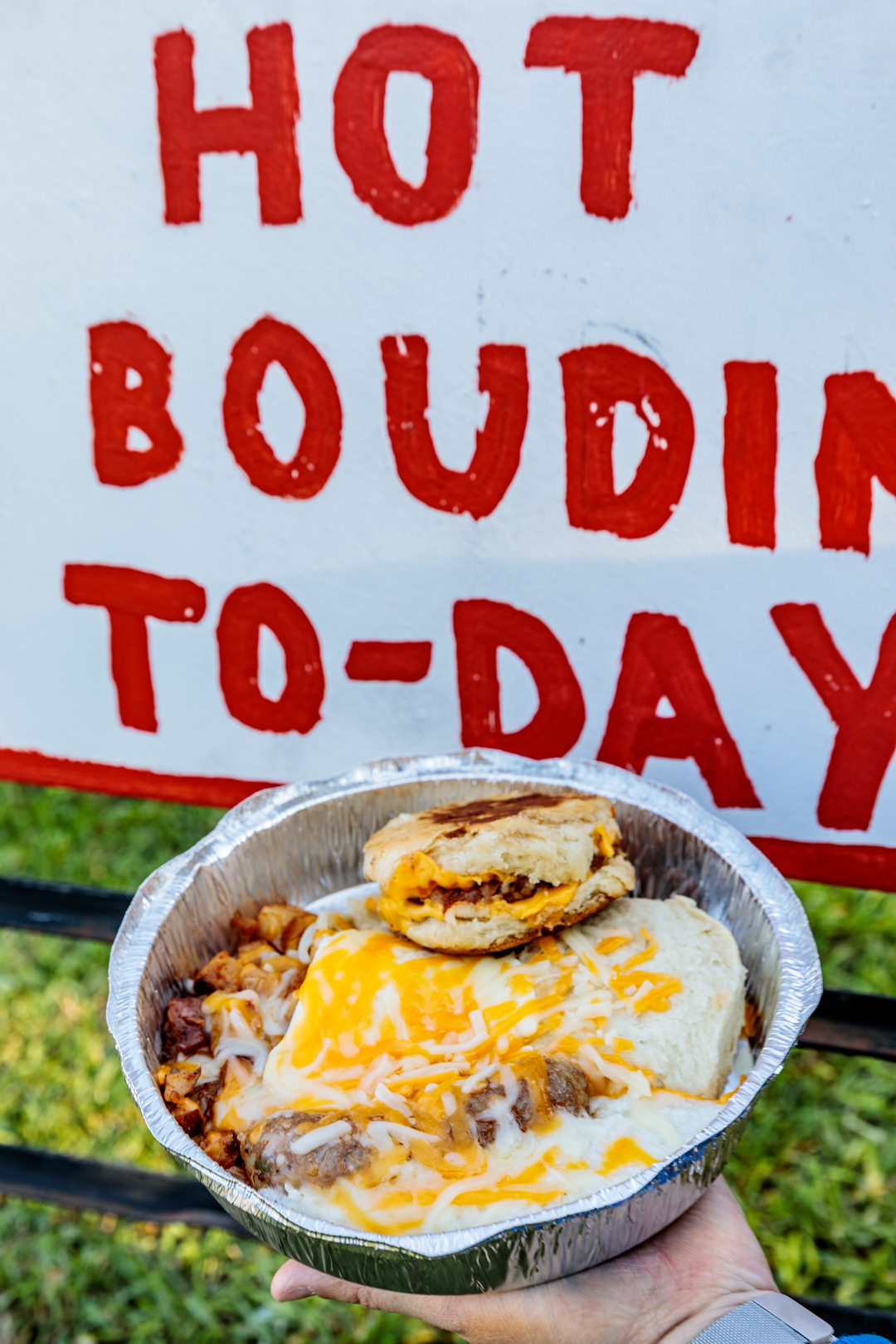
Boudin Bowl + Boudin Breakfast Biscuit | Johnson’s Boucanière, Lafayette, LA
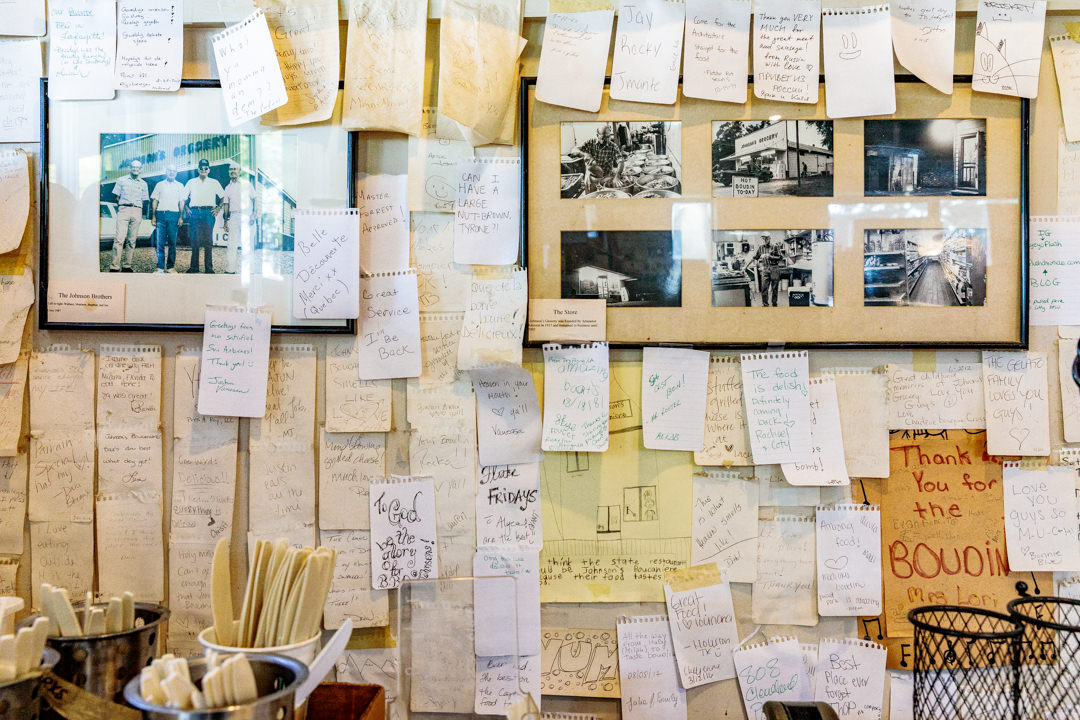
Personal Notes at Boudin Stop | Lafayette, LA
After I arrived in Lafayette, Louisiana, the capital of Cajun Country, fairly late, I woke up bright and early to venture to my first stop. Johnson’s Boucaniére was originally a grocery in Eunice, LA, just down the road from Lafayette, since 1937. The grocery offered the standard dry goods stop for many hungry locals, providing for a perfect opportunity to sell their iconic links. Wallace Johnson (seen above) has kept the family recipe alive and delicious. His family continues to make amazing links, and offer a killer breakfast and lunch menu.
My first breakfast in Louisiana was a double play. A nénaine (meaning godmother) special and a boudin bowl. The special was boudin stuffed grilled cheese on a biscuit with BBQ sauce. *faints* I couldn’t turn down anything on a biscuit, ya know. Yes. This was just breakfast, y’all. Is this what heaven is like??
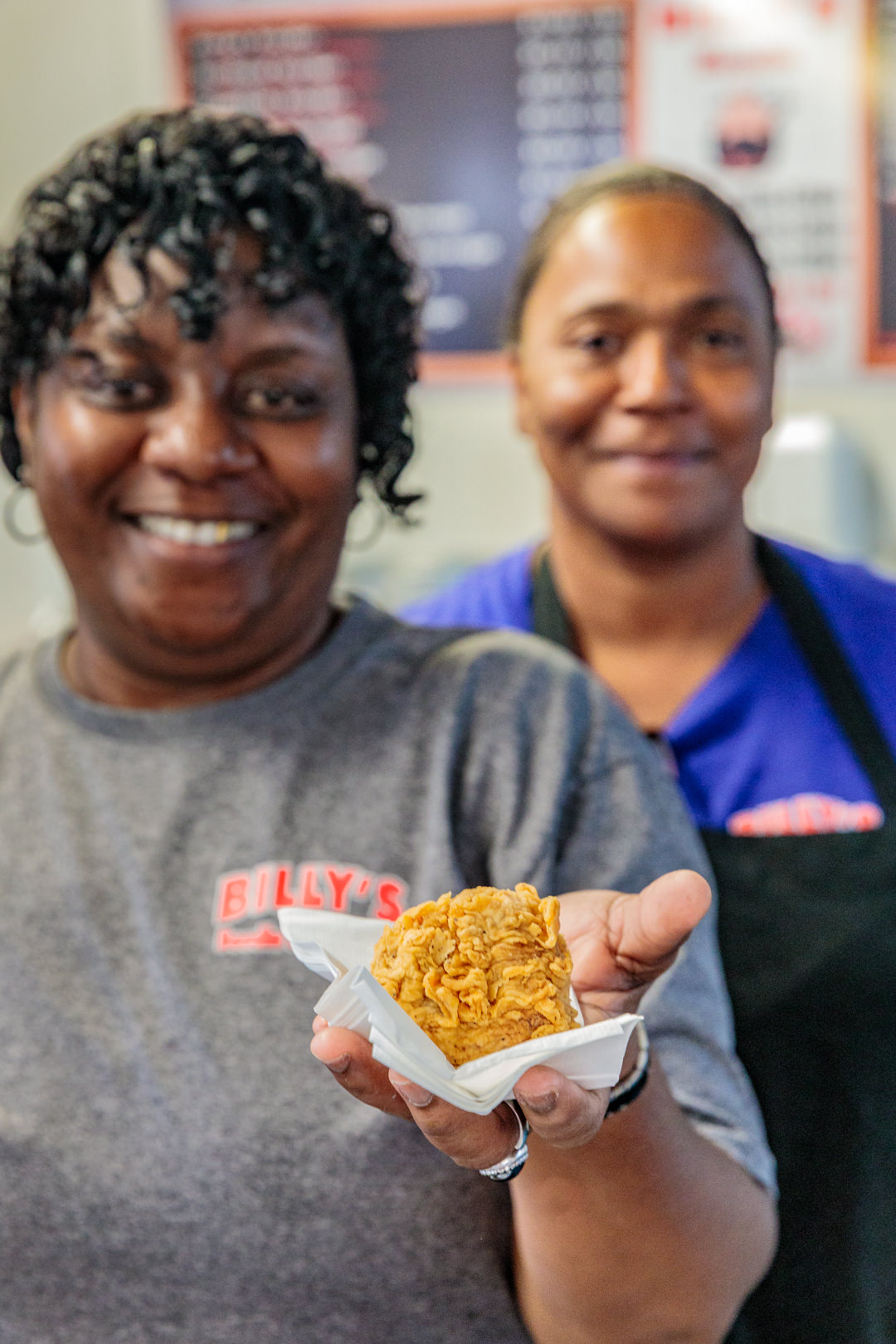
Fried Boudin Ball | Billy’s Boudin, Opelousas, LA
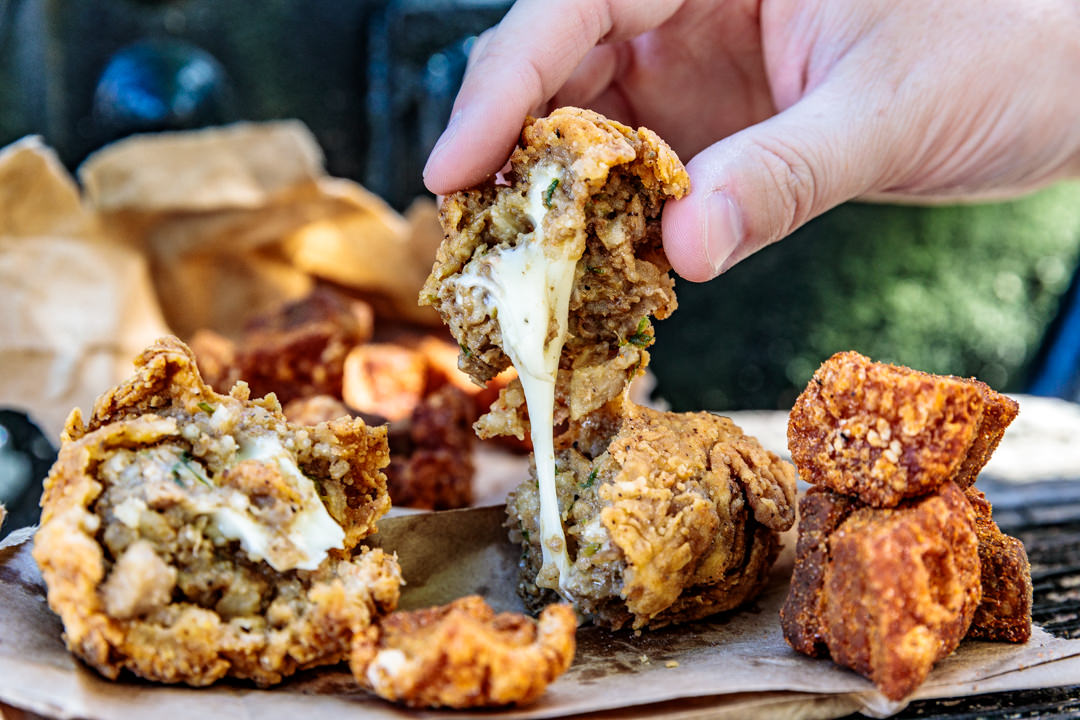
Pepper Jack Cheese Stuffed Boudin Balls | Opelousas, LA
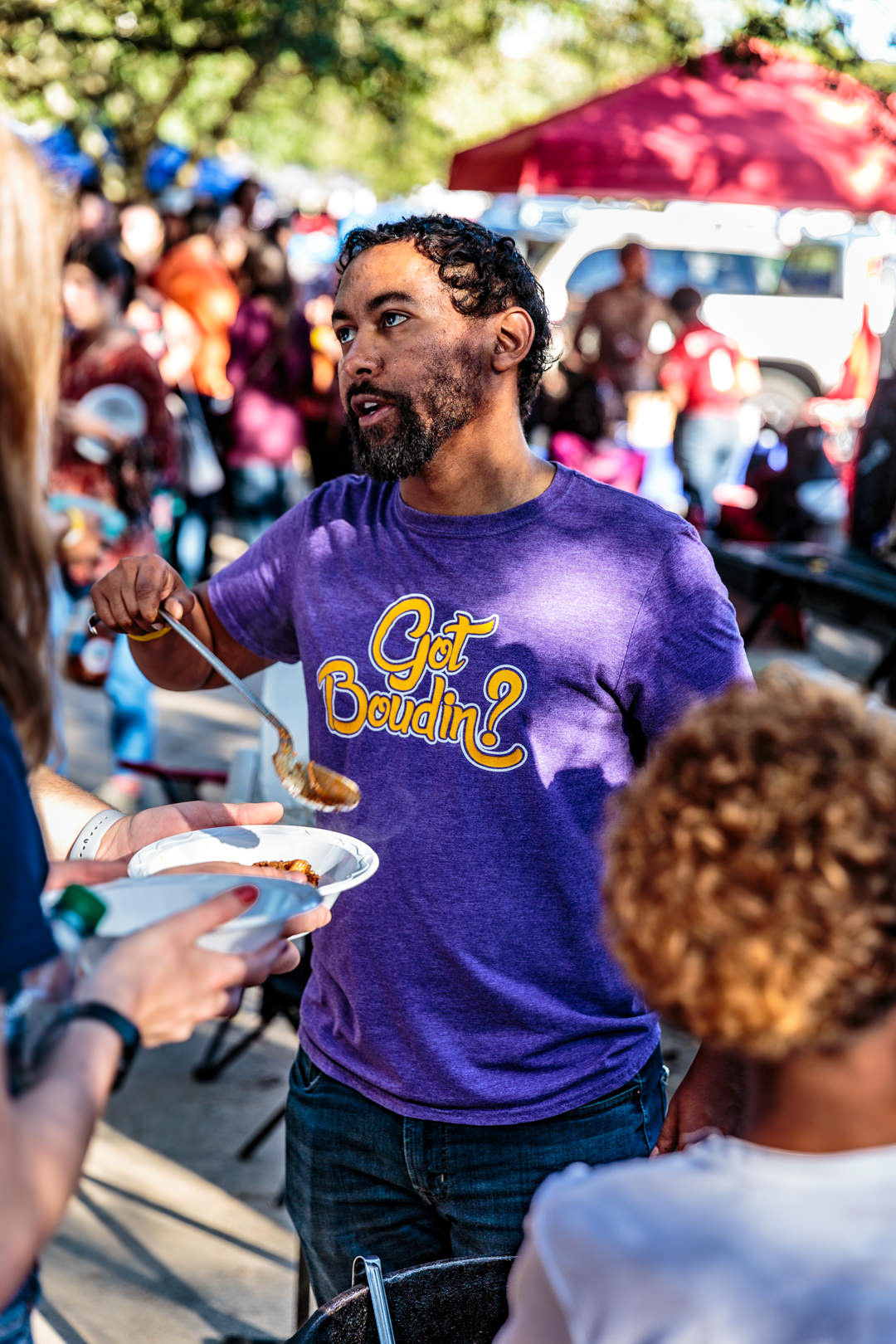
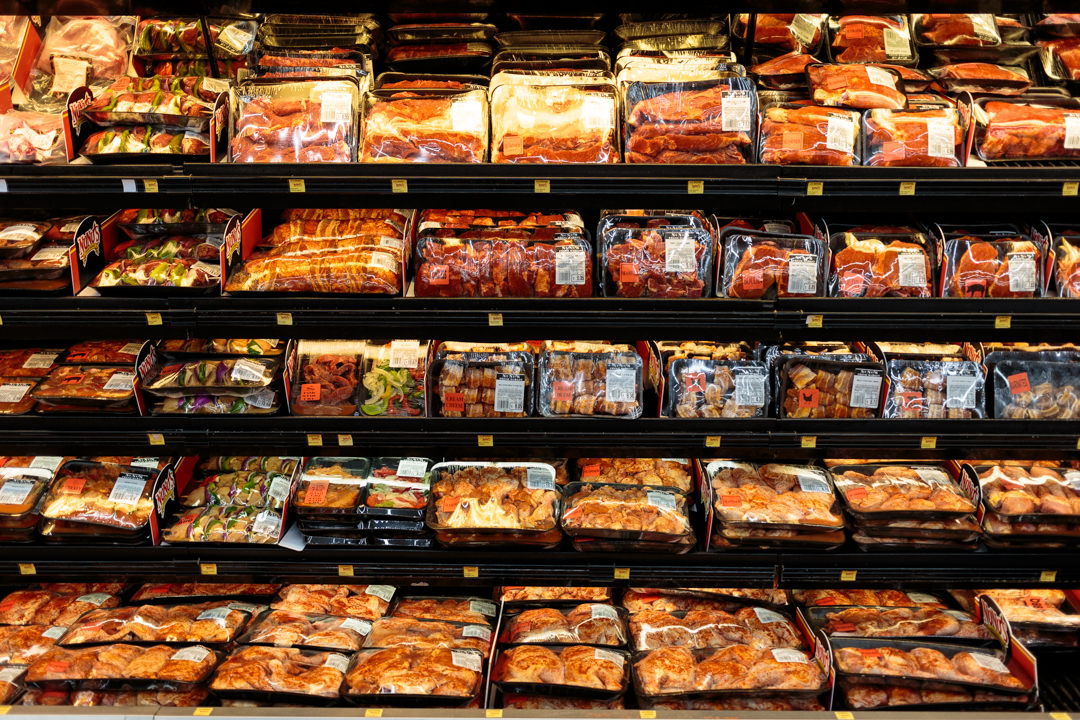
NuNu’s Market | Youngsville, LA
Boudin quickly became a welcomed theme of my trip. Standard boudin (just ask for a link if you want to seem a bit more like a local), boudin biscuits, fried boudin balls. All of it was different at every outlet and never disappointed. NuNu’s Market, Billy’s Boudin, Herbert’s, Don’s. Boudin was all part of their menus.
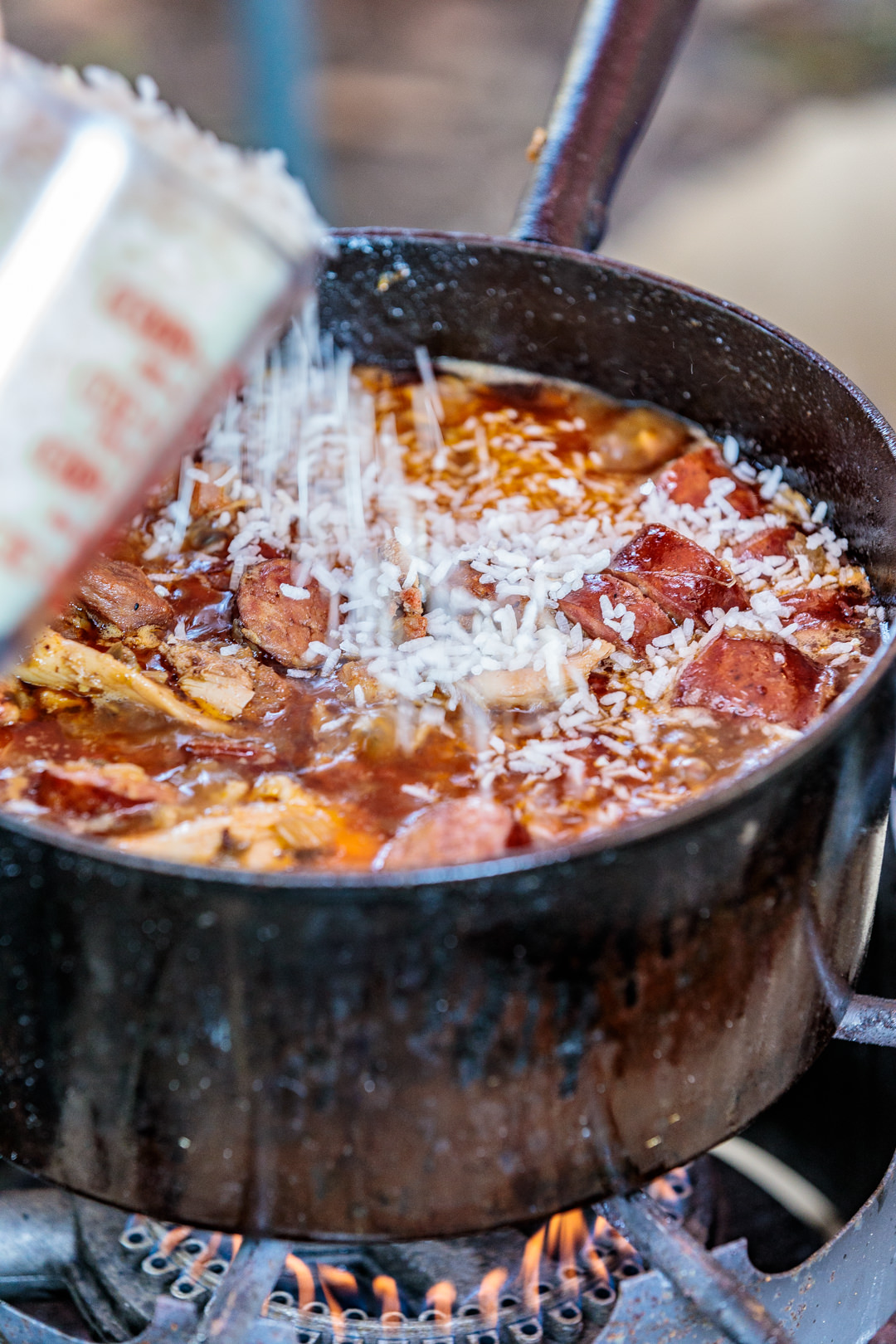
Adding Rice to Jambalaya
Jambalaya & Gumbo
Traditionally, jambalaya always includes sausage of some sort and is cooked with rice. The sausage is often smoked, such as andouille, and served along with other meat or seafood, usually pork, chicken, crawfish, or shrimp. Gumbo, meanwhile, is a roux-thickened stew, that includes similar ingredients to jambalaya, and is the ultimate comfort food.
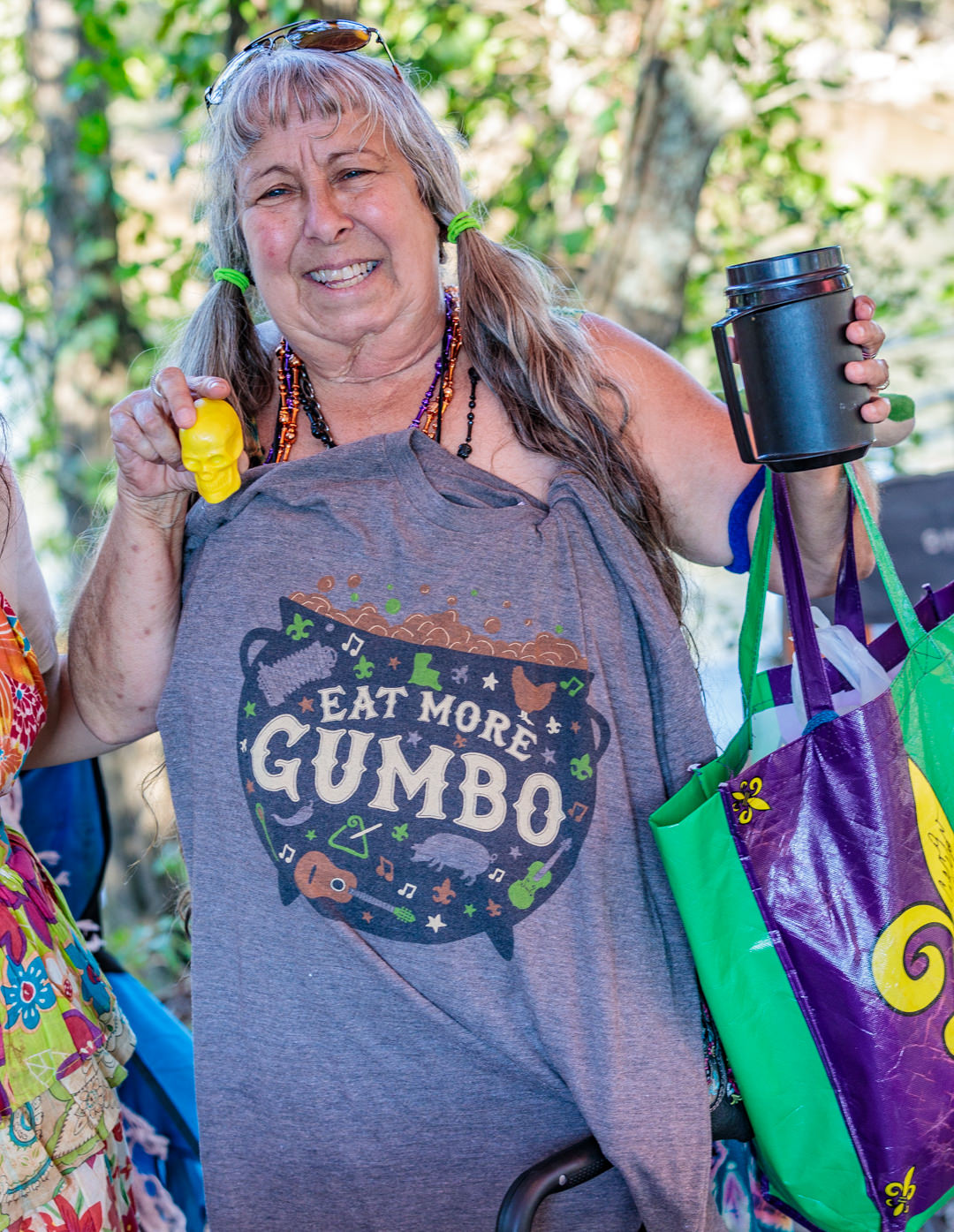
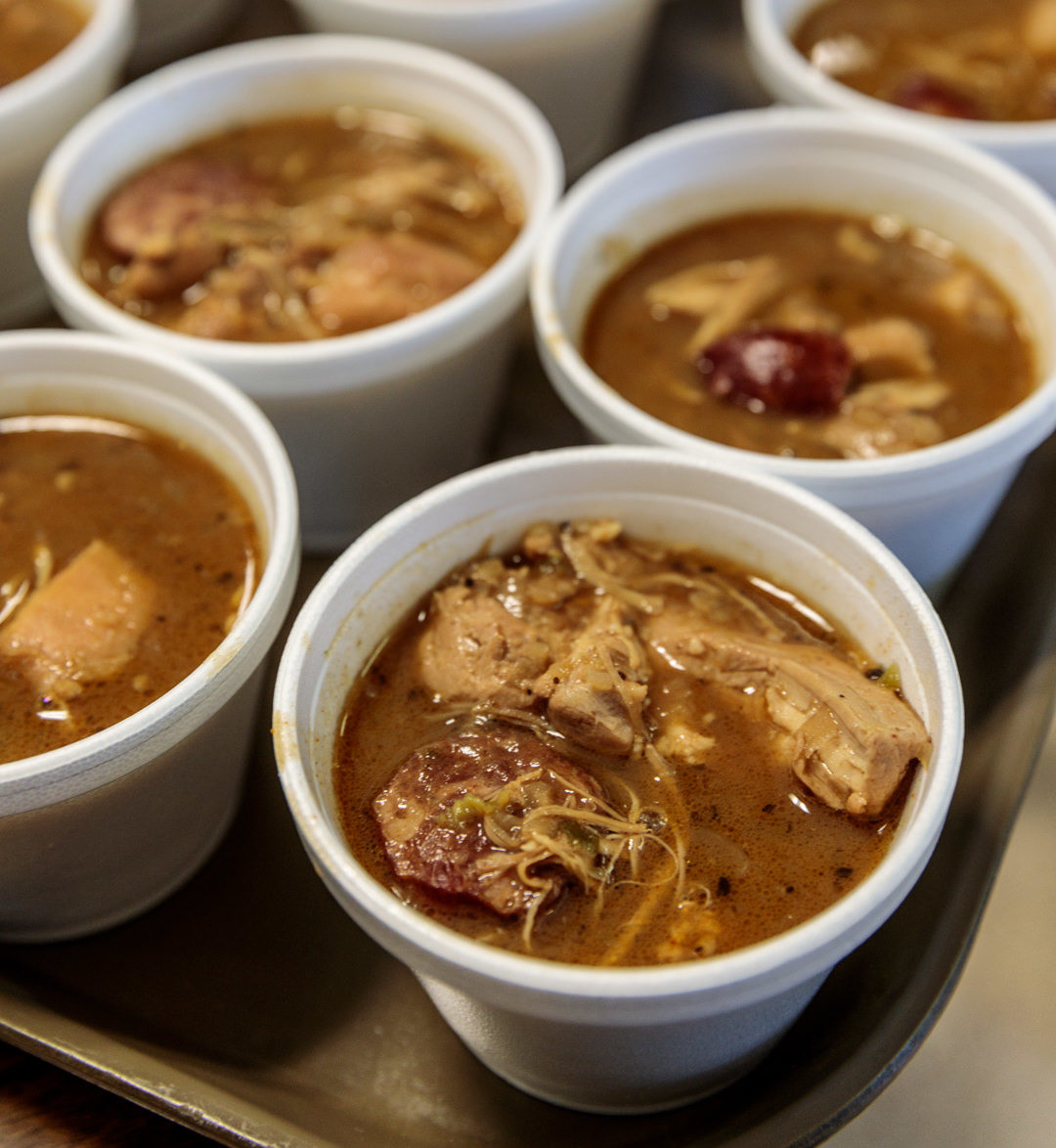
Gumbo | Ton’s Drive In, Broussard, LA
During my trip, I visited the annual Blackpot Festival & Cookoff. This music festival and foodie fest is set in historic Vermillionville, and I was able to try so many incredible dishes of both jambalaya and gumbo while listening to great local acts. These dishes have richness along with the heavy history both still front and center.
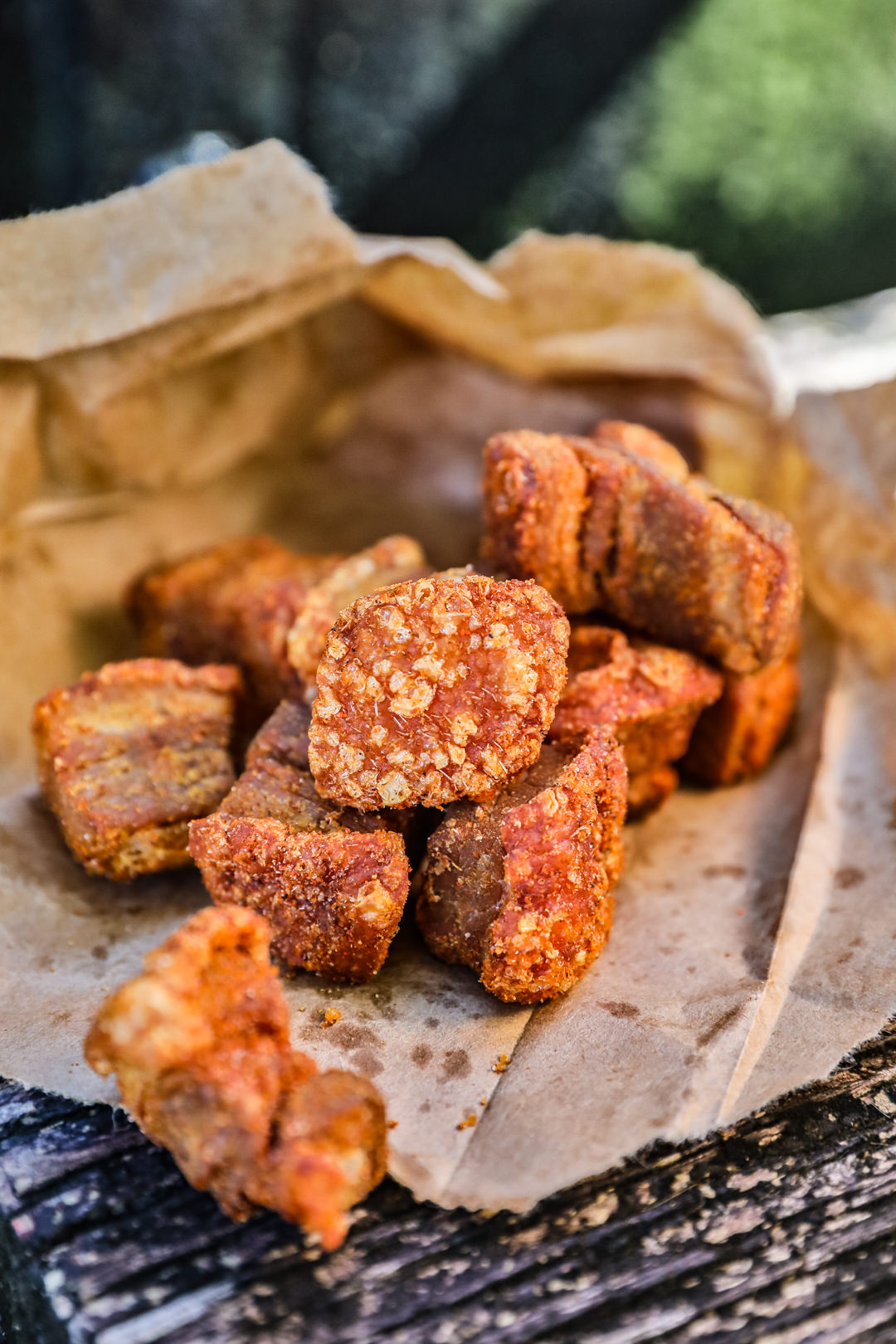
Cracklin’ in Southern Louisiana
Cracklin’
From every good boucherie comes a host of great snacks. Butcher shops have always had a history of some special bites for the butcher from the trimmings, but cracklin’ has to take the cake. I might even argue that cracklin’ isn’t so much of a byproduct but is the secret star — with everything else being secondary. It is simply addictive. So much so, that I was that guy that brought a brown bag full of them for my flight home snack. They are the perfect balance of chewy, salty, and rich. Think of it like jerky for a bacon lover. P.S. – You are definitely allowed to bring a backpack full of these home on a plane. I did it and am hopefully stocked until my next visit.
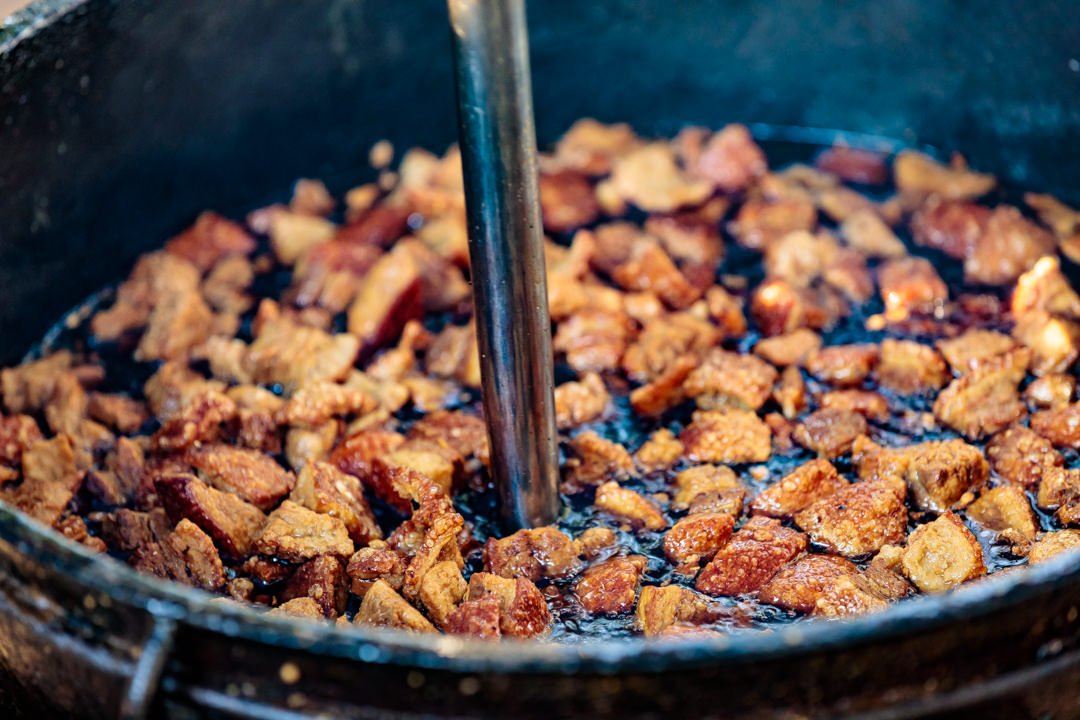
Frying Cracklin’
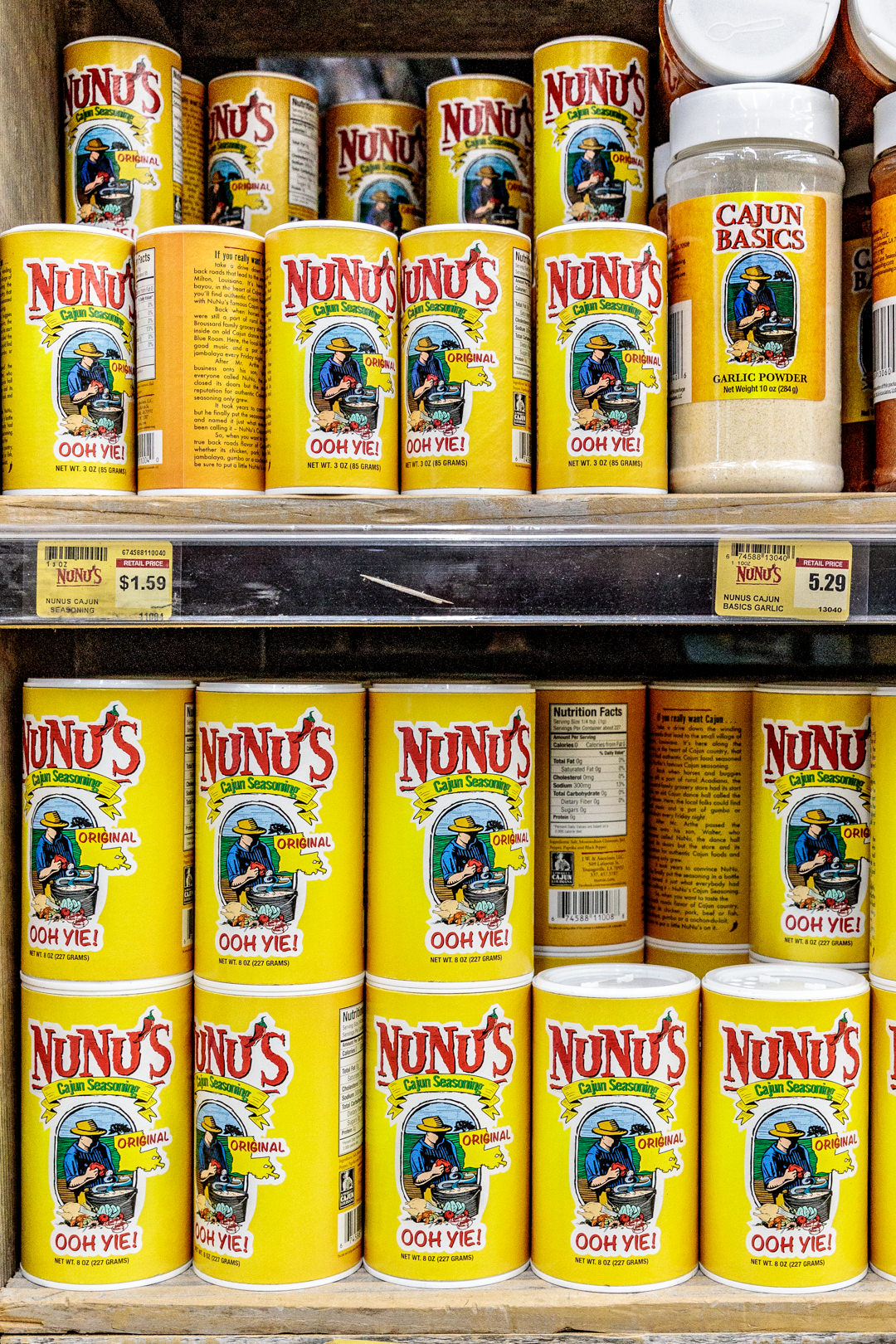
Just like with any specialty snack, there are a ton of different ways to make cracklin’. Some prefer to make it with pork back fat, others with belly. You have to start with a perfect balance of fat, skin, and meat to get the right end result. Nearly every cracklin’ stop (and boudin too, really) has its own seasoning blend as well. For now, I’m leaving this to the pros that have been producing it for ages, but one day I will try to make my own so I can keep my newly-formed addiction alive. Luckily, finding cracklin’ in Louisiana is often as simple as stopping to get gas and heading inside to grab a bag.
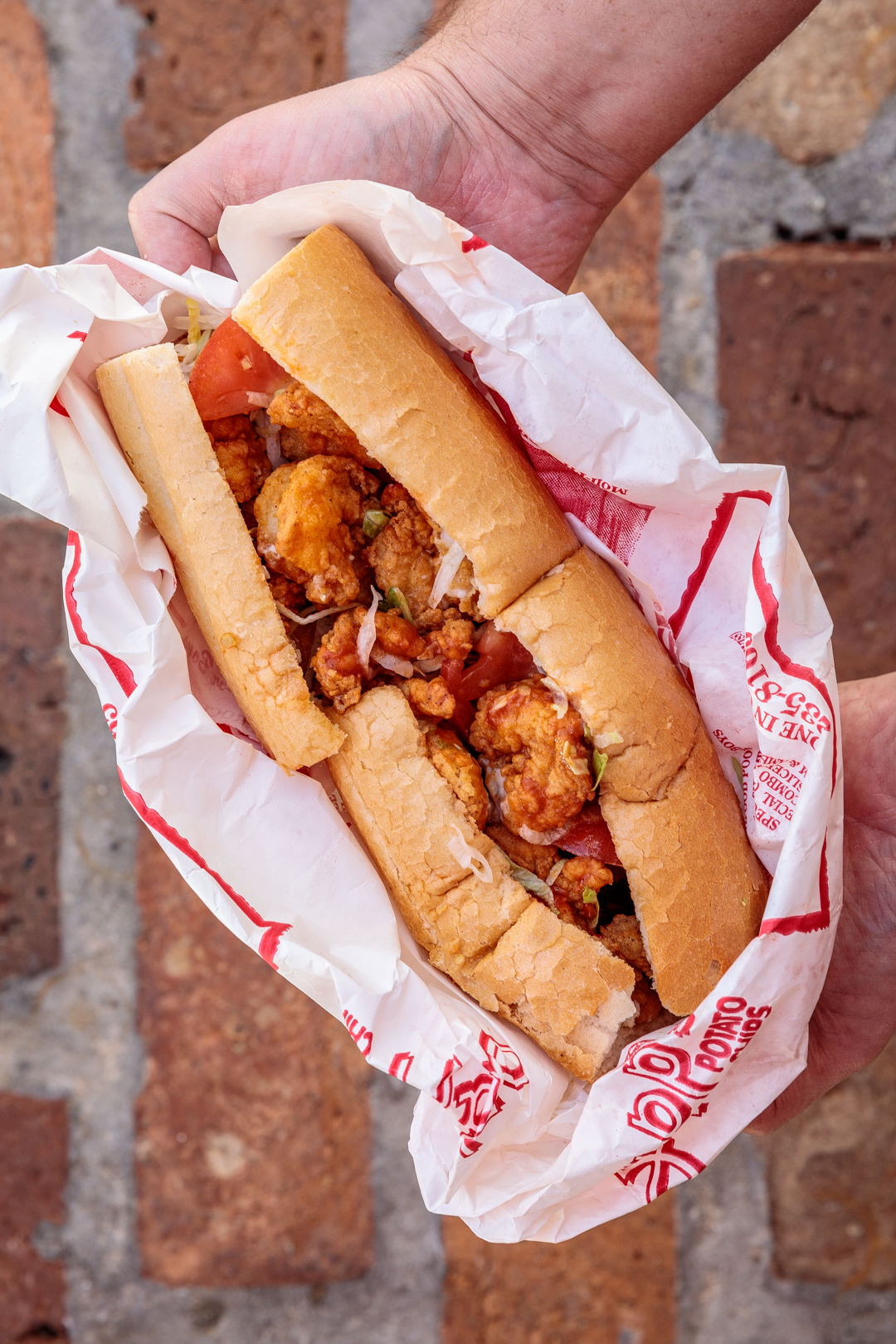
Fried Shrimp Po’-Boy | Olde Thyme Grocery, Lafayette, LA
Po’-Boys
I’ve got 99 problems, and this poboy most definitely ain’t one. I found Old Tyme Grocery by accident after walking around the university area of Lafayette. I saw a bunch of college kids coming out of this small building with TABASCO®-dripping sandwiches piled with shrimp. Sure, I had already had lunch. Did I care? Absolutely not. I’m a sucker for anything served between bread, so a second lunch it was. During crawfish season, I’m sure that would make an incredible filling.
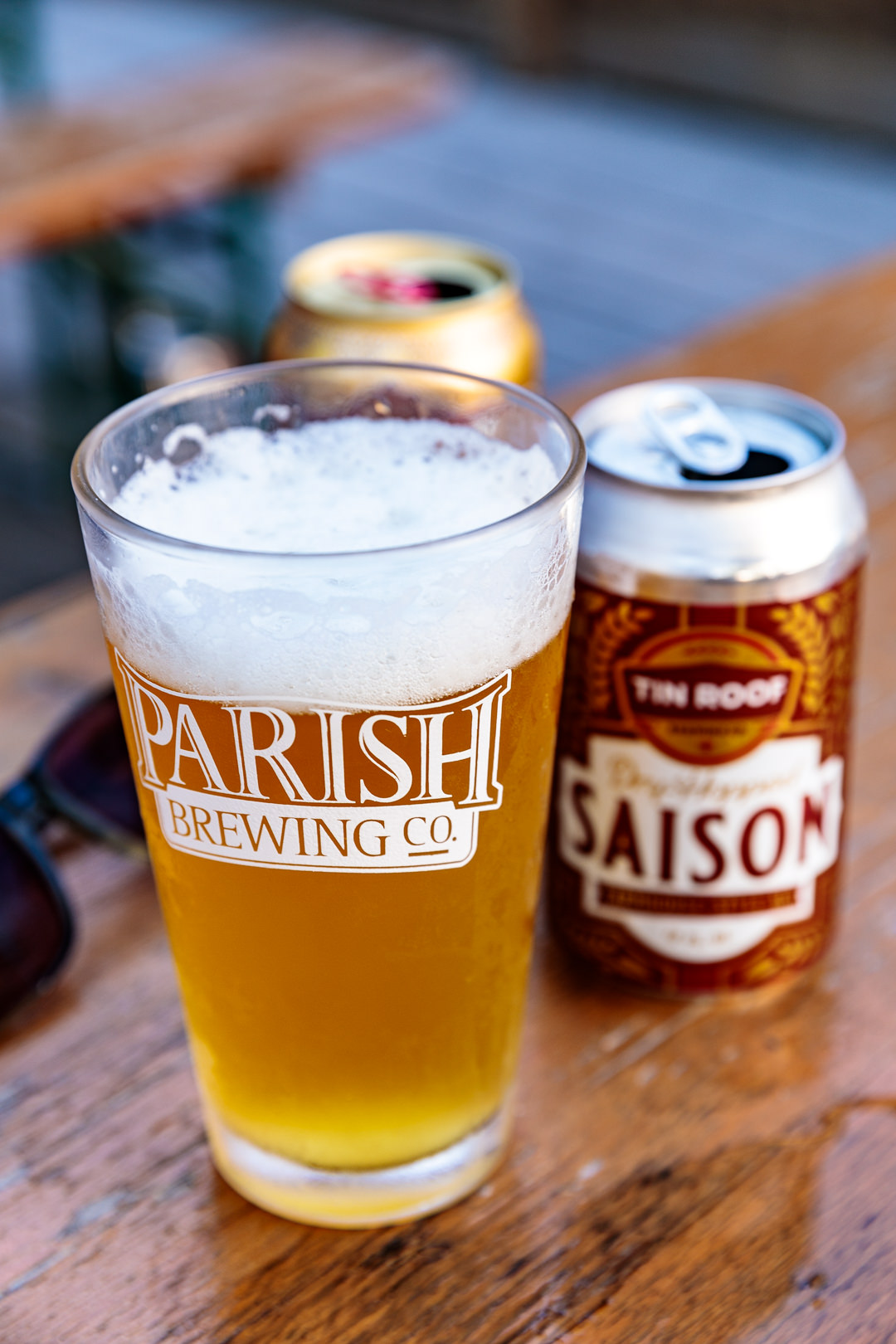
Local Brews | Wurst Biergarten, Lafayette, LA
Brews, Bites, & Bars
I’ve been known to enjoy a drink or two, so y’all know I had to try a few local taps out here to be sure I gave everything its fair amount of attention while I was in town. I think these were some of my favorite moments that were shared with what started out as strangers. Everyone was friendly and helped expand my list of restaurants and spots to visit.
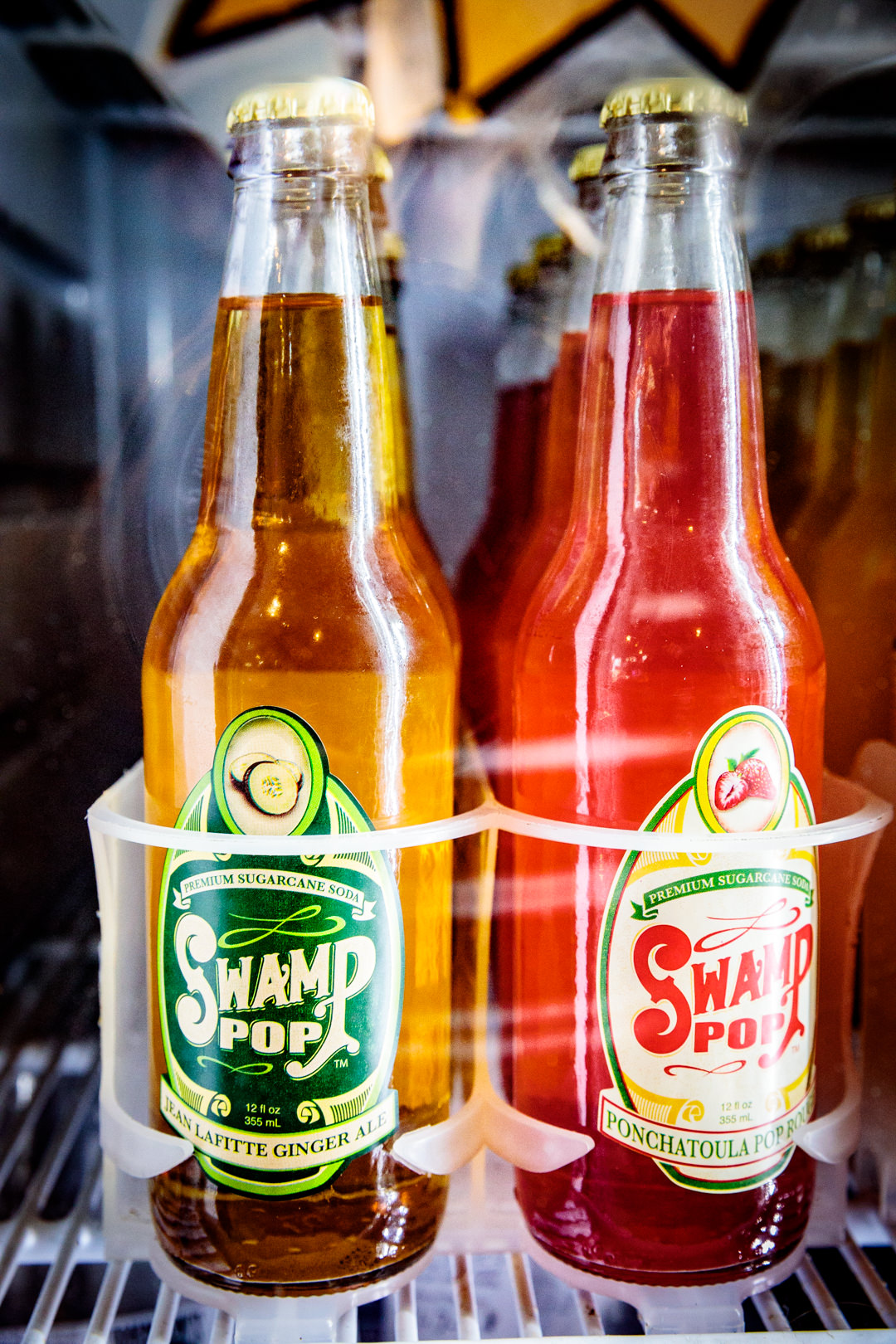
- King Cake | Poupart’s Boulangerie, Lafayette, LA
- Luck finder of the King Cake baby!
Local brews were always cold and never disappointing. The hop houses in Louisiana put out some seriously good beer. I made sure that one of my must-ask questions for the locals was what their favorite brewery was. It’s a great way to chat and to get the inside scoop to navigate the tap list a bit when you may be unsure of where to start. It’s no wonder that this part of Louisiana has been named the “tastiest town”. Bayou Teche Brewing Company is also a great local stop. I enjoyed plenty of beers from all across the state while I was in town that will be added to my favorites list when I get back to Nashville.
- Open, y’all!
- Grilled Oysters
If you are looking for something less hard, but just as tasty, I discovered Swamp Pop soda. Apparently also a music genre, Swamp Pop is a popular Cajun Country sip that is blended with local flavor, inspiration and plenty of Louisiana cane sugar. I’d love to try to incorporate this into a cake recipe sometime… Lots of ideas!
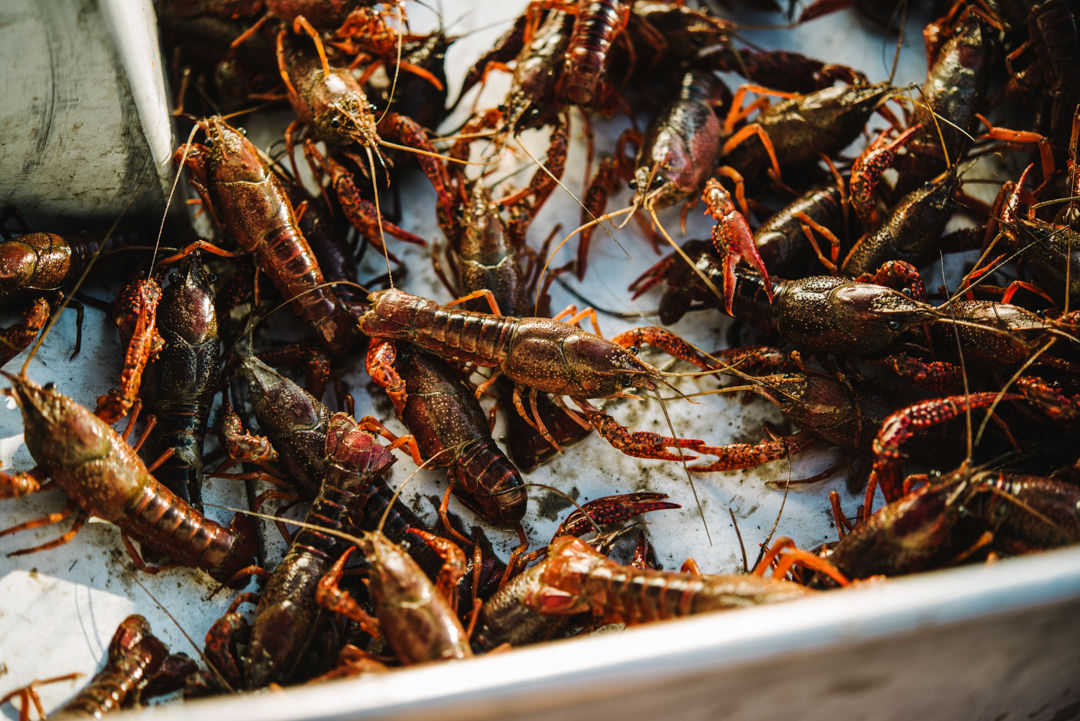
Crawfish | ©Denny Culbert/Lafayette Travel
The abundance of seafood was the obvious driver of a lot of the cuisine. The West Gulf Coastal Plain area provides the incredible fresh shrimp, crawfish, crab, oysters, and other seafood to the area. You can fish in a large variety of places with the area’s distinct bayous, gulf waters, lakes, and marshes.
I couldn’t talk about these dishes without what may be the most important part of their creation. Groups of friends, family, and visitors alike all gather together when these dishes are being made. With my camera in hand, full of questions and cracklin’, every single person that I met treated me as if I had been part of their community for ages. I can’t even begin to count the number of dishes that I was invited to taste. It was close to the number of laughs that I shared with what I would consider my newest friends. You can’t help but feel like each and every one of these bites were packed with Cajun kindness. — Laissez les bon temps rouler, y’all. Let the good times roll.
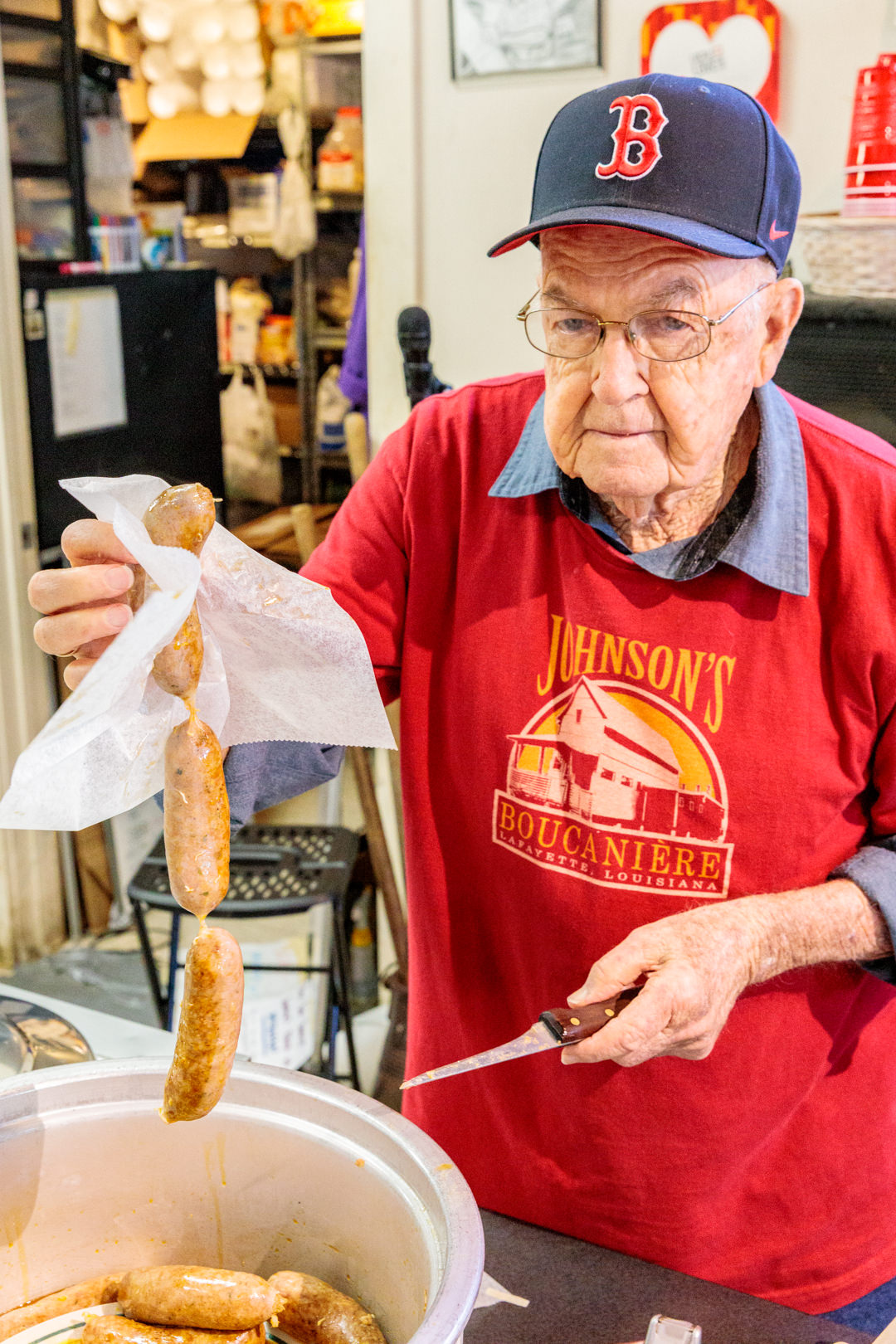
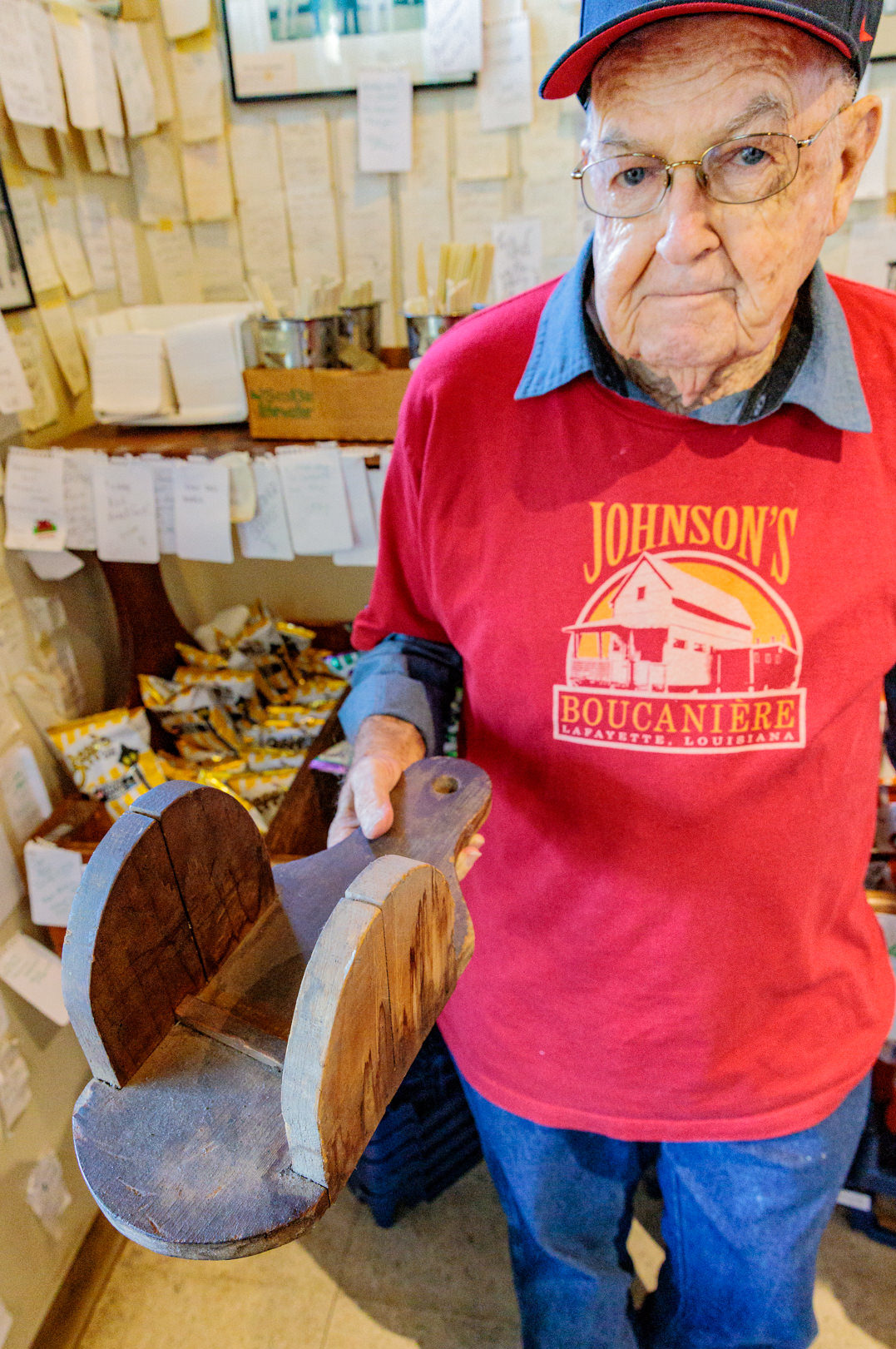
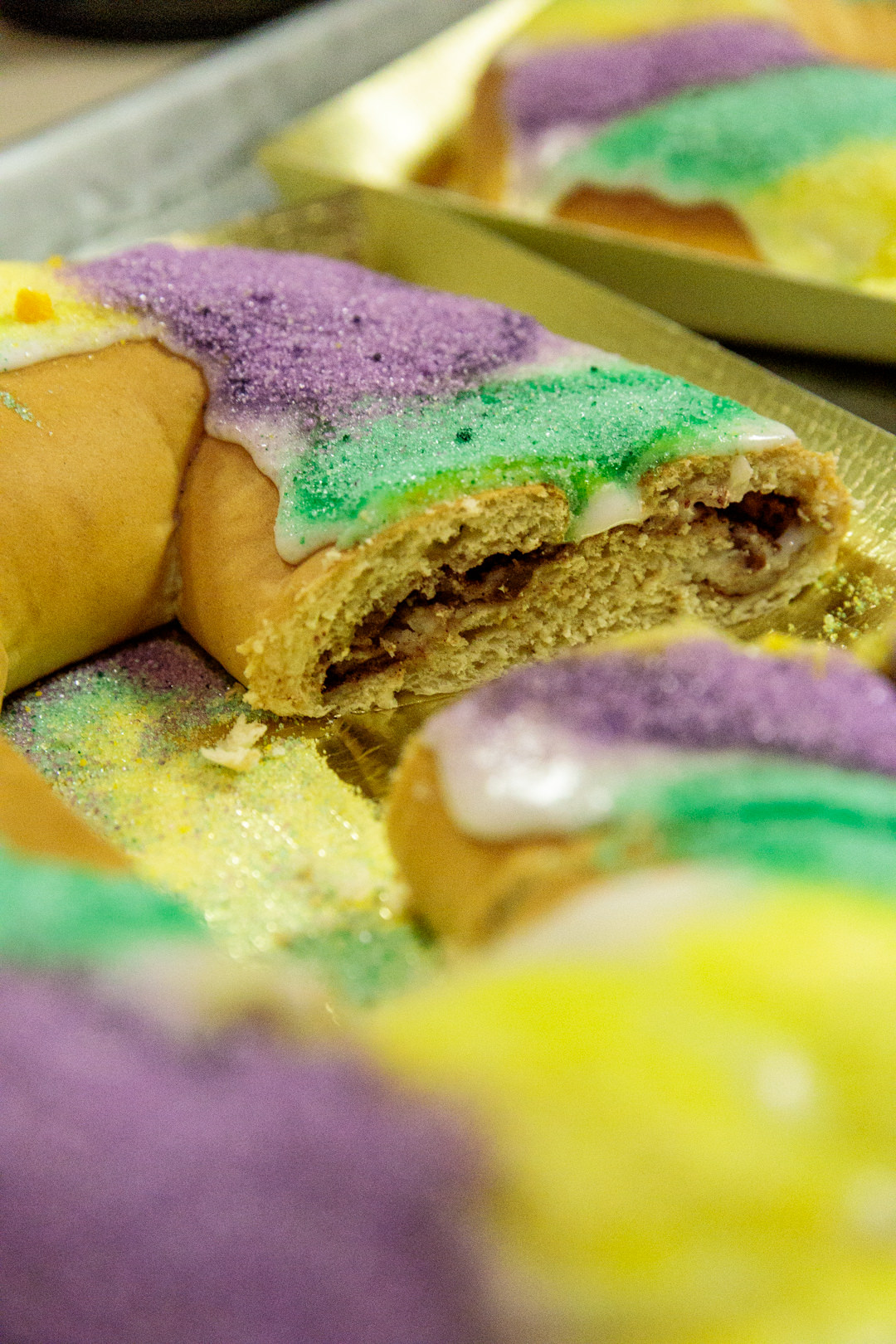
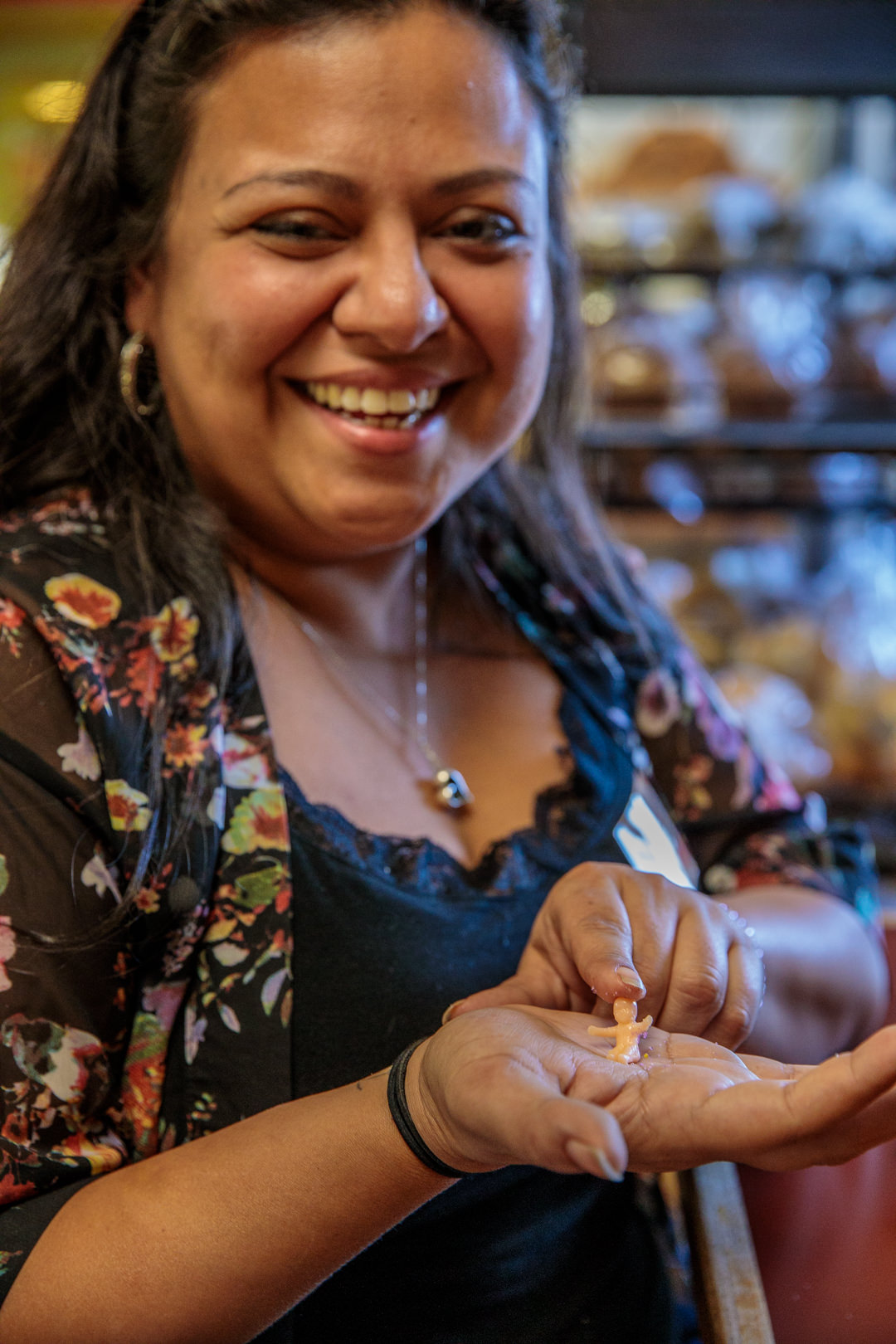
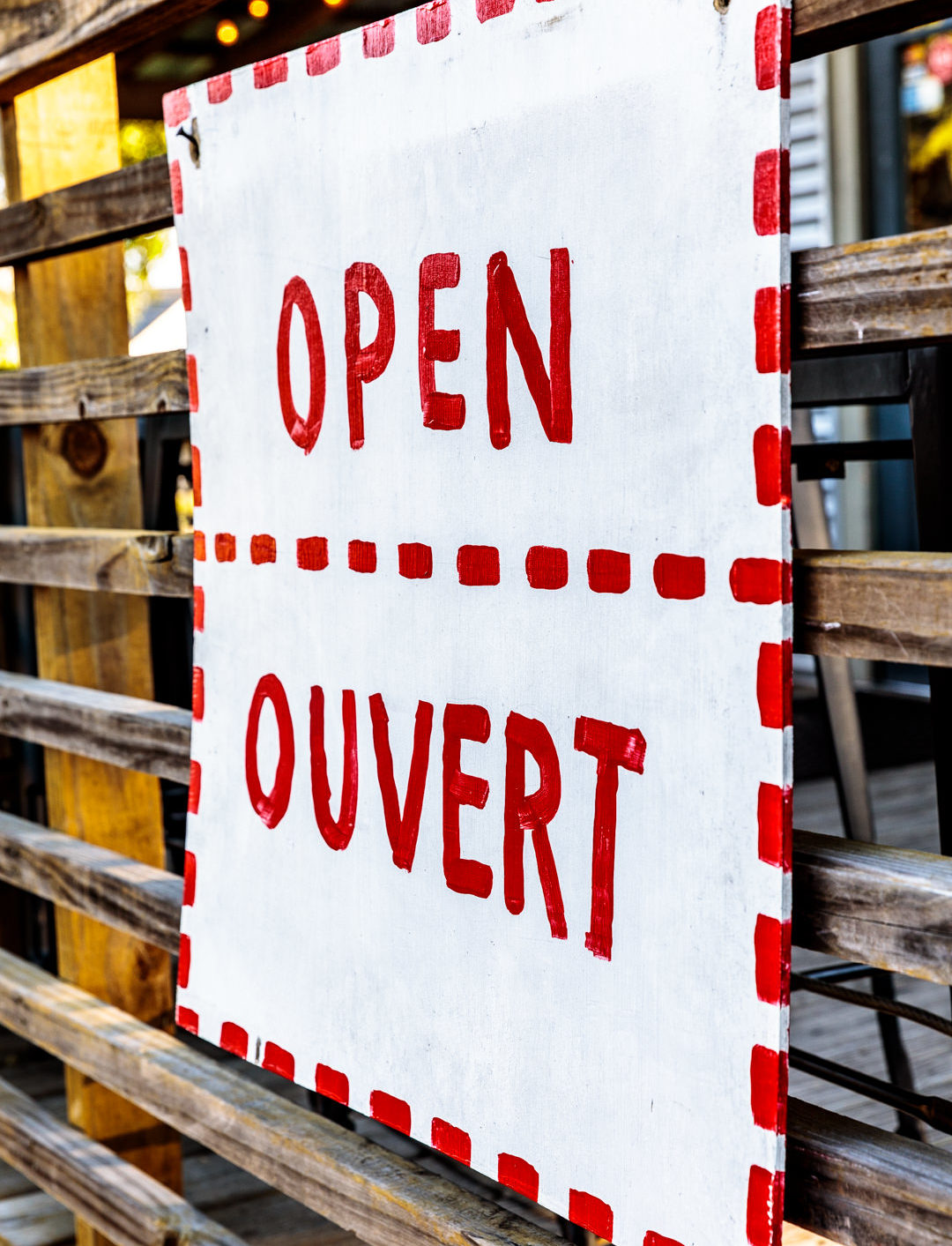
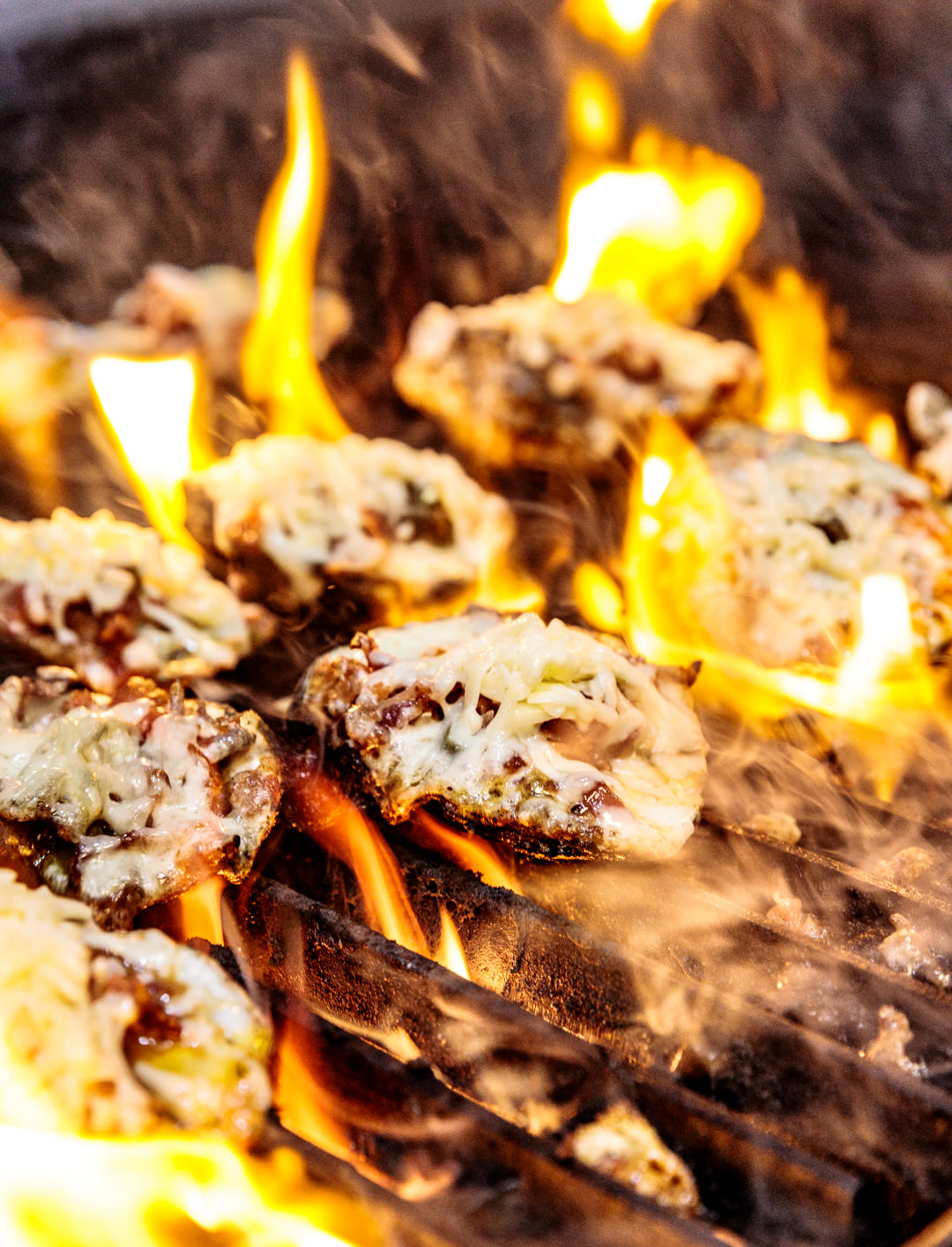



Lloyd
There are 64 parishes in the whole state. Depending on who you ask, “Cajun country” (Acadiana) is made up of only 22-25 of those parishes. Good article, though.
Erin R.
Ah, my Louisianan (step)dad made us gumbo once, but I’m pretty sure it was from a mix. I thought it was delicious and can only imagine what the real thing is like. Those photos are glorious.
Phillip @ SouthernFATTY.com
Thanks, Erin! Loved the food down there. So much character.
The Book of Food
Oh yeah, it’s my dream place to visit ! I hope to make it there someday ! 😀
Phillip @ SouthernFATTY.com
Def should give it a visit!